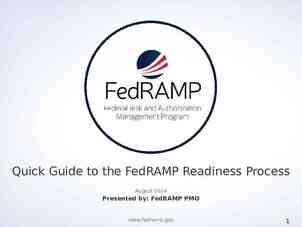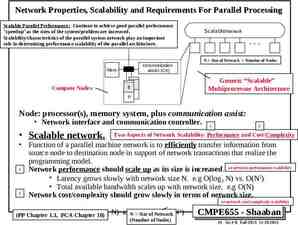Criminal Procedure Court Systems and Practices
20 Slides286.28 KB
Criminal Procedure Court Systems and Practices
Copyright Texas Education Agency, These Materials are copyrighted and trademarked as the property of the Texas Education 2017. Agency (TEA) and may not be reproduced without the express written permission of TEA, except under the following conditions: 1) Texas public school districts, charter schools, and Education Service Centers may reproduce and use copies of the Materials and Related Materials for the districts’ and schools’ educational use without obtaining permission from TEA. 2) Residents of the state of Texas may reproduce and use copies of the Materials and Related Materials for individual personal use only, without obtaining written permission of TEA. 3) Any portion reproduced must be reproduced in its entirety and remain unedited, unaltered and unchanged in any way. 4) No monetary charge can be made for the reproduced materials or any document containing them; however, a reasonable charge to cover only the cost of reproduction and distribution may be charged. Private entities or persons located in Texas that are not Texas public school districts, Texas Education Service Centers, or Texas charter schools or any entity, whether public or private, educational or non-educational, located outside the state of Texas MUST obtain written approval from TEA and will be required to enter into a license agreement that may involve the payment of a licensing fee or a royalty. For information contact: Office of Copyrights, Trademarks, License Agreements, and Royalties, Texas Education Agency, 1701 N. Congress Ave., Austin, TX 78701-1494; phone 512-463-7004; email: [email protected]. Copyright Texas Education Agency, 2017. All rights reserved. 2
Key Terms Bail-jumping – defaulting on one’s own bail Bail bondsman – one who provides bail as a surety for a criminal defendant’s release Bail bond – a bond given to a court to guarantee the defendant will appear in court; obtains the defendant’s release from confinement Copyright Texas Education Agency, 2017. All rights reserved. 3
Key Terms Excessive bail – bail that is unreasonably high considering the offense and the risk that the defendant will not appear Surety – the person primarily liable for the payment of another’s debt or the performance of another’s obligation Copyright Texas Education Agency, 2017. All rights reserved. 4
Police and Prosecutor Interactions Role of the Prosecutor Supervise the legality of the procedures during the investigation and bring the criminal action to court Impact police work by returning cases for further investigation and refusing to sign warrants that are lacking probable cause Check police investigations against due process Give instructions on certain acts or decisions concerning particular matters Copyright Texas Education Agency, 2017. All rights reserved. 5
Police and Prosecutor Interactions Joint Roles Police and District Attorney (DA) investigators may both be responsible for the investigation Prosecutors without police cooperation will have problems investigating and presenting evidence in court Police and prosecutors often have conflicting views over the dispositions of cases Both parties want justice for the victims Both parties present evidence at trial Copyright Texas Education Agency, 2017. All rights reserved. 6
Police and Prosecutor Interactions Role of the Police Investigate the crime Protect the victim Provide evidence and testimony in court Depend on prosecutors to advise them on legal issues and hold them accountable in regards to constitutional rights Copyright Texas Education Agency, 2017. All rights reserved. 7
Pre-trial Proceedings: Rules of Discovery Discovery is the formal process by which the defense and prosecution exchange information relevant to a criminal investigation Provides pertinent information Aids in adequate preparation for trial Helps criminal justice system reach reliable outcomes Copyright Texas Education Agency, 2017. All rights reserved. 8
Pre-trial Proceedings: Rules of Discovery Evidence can be appropriately scrutinized and give the accused a meaningful opportunity to challenge and test evidence http://www.statutes.legis.state.tx.us/Docs/CR/htm/CR.39. htm Copyright Texas Education Agency, 2017. All rights reserved. 9
Pre-trial Proceedings: Rules of Evidence General Purpose Restricts the content and manner of presentation Ensures that the trial runs smoothly Protects against unfair trials It is the role of the prosecutor and defense to challenge rule of evidence violations Copyright Texas Education Agency, 2017. All rights reserved. 10
Pre-trial Proceedings: Rules of Evidence Rules Regulating Testimony Purpose is to influence opinion of the judge and jury Testimony must be logically connected to the issue and deemed admissible Testimony that is logical to the issue is not always admissible The witness must testify on firsthand information only (Personal Knowledge Rule) Testimony of character by defendant or others (The Mercy Rule) Copyright Texas Education Agency, 2017. All rights reserved. 11
Pre-trial Proceedings: Rules of Evidence Rules Regulating Testimony “Bad character” evidence may not be submitted unless “good character” evidence is presented first Witness credibility can be challenged by attacking honesty and criminal activity If no good character evidence is entered, then the defendant’s past convictions cannot be entered Rape victims are shielded from attacks on their sexual history under the Rape Shield laws Copyright Texas Education Agency, 2017. All rights reserved. 12
Pre-trial Proceedings: Rules of Evidence Rules Regulating Testimony Hearsay rules prevent testimony that is not firsthand from being admitted Statements not subjected to cross-examination are not permitted Expert testimony may include opinions and references to previous witness’ testimony. Expert testimony may be paid The “Chain of Custody” rule regulates admissibility and credibility of evidence to ensure evidence is not tampered with or somehow altered prior to the trial Copyright Texas Education Agency, 2017. All rights reserved. 13
Pre-trial Proceedings: Rules of Evidence Rules Regarding Scientific Evidence Include scientific or forensic evidence Scientific evidence entered by both sides DNA Fingerprints Ballistics Polygraph results are not considered reliable and are inadmissible Copyright Texas Education Agency, 2017. All rights reserved. 14
Pre-trial Proceedings: Rules of Evidence Rules Regarding Scientific Evidence Other forms of altered consciousness statements are not accepted The judge determines admissibility by considering Validity of the evidence Credibility of the science behind it How influential the evidence may be Copyright Texas Education Agency, 2017. All rights reserved. 15
Pre-trial Proceedings: Rules of Evidence Rules Regarding Scientific Evidence Private information cannot be released without consent of the holder Confidentiality Exceptions Client telling his or her attorney he or she will commit a future crime Holder of privileged information elects to also include a third party in the communication Copyright Texas Education Agency, 2017. All rights reserved. 16
Pre-trial Proceedings: Bail Process Order of Process Arrest Booking (jail) Arraignment The judge determines if the subject is eligible for bail and the cost The judge takes into account Seriousness of the crime Flight risk Criminal history Ties to the community Danger to others Copyright Texas Education Agency, 2017. All rights reserved. 17
Pre-trial Proceedings: Bail Process Cash Bail - the accused pays the full amount of bail in cash. The court may accept checks or credit cards Surety Bond (Bail Bond) The bail bondsman pledges to pay the full value of the bond if the accused does not appear in court. The bail bondsman charges 10–20% and collects some sort of collateral that usually involves a friend or a relative If the defendant fails to appear before the court, the bail bondsman is responsible for paying the entire bail amount A bounty hunter is then contracted to locate the defendant and bring him or her before the court Copyright Texas Education Agency, 2017. All rights reserved. 18
Pre-trial Proceedings: Bail Process Release on Citation – the suspect is issued a citation to appear before a court at a later date Release on Own Personal Recognizance – the suspect is responsible for showing up to court dates and does not pay bail. It is highly unlikely the person will flee and not appear for court Property Bonds – the defendant provides property as a bond and a lien is placed on the property. If the defendant fails to show for court the property is foreclosed on to recover the bail Copyright Texas Education Agency, 2017. All rights reserved. 19
Resources Texas Code of Criminal Procedure (CCP, Art. 39.14) http://www.statutes.legis.state.tx.us/Docs/CR/htm/CR.39.htm Do an Internet search for the following: Cold case resulted in heated relationship between police chief, prosecutor Lawfirms evidence in criminal trials How bail works Relationship between the Prosecution Service and the Police Copyright Texas Education Agency, 2017. All rights reserved. 20

























